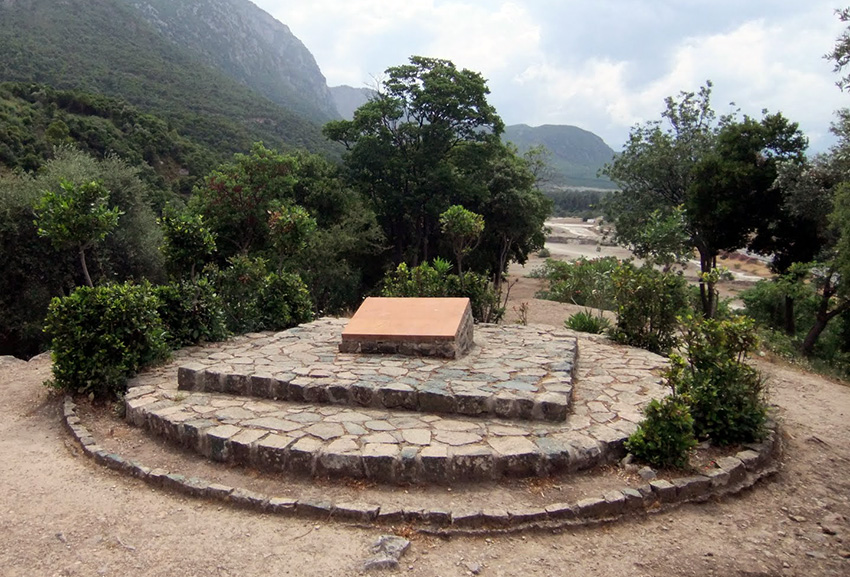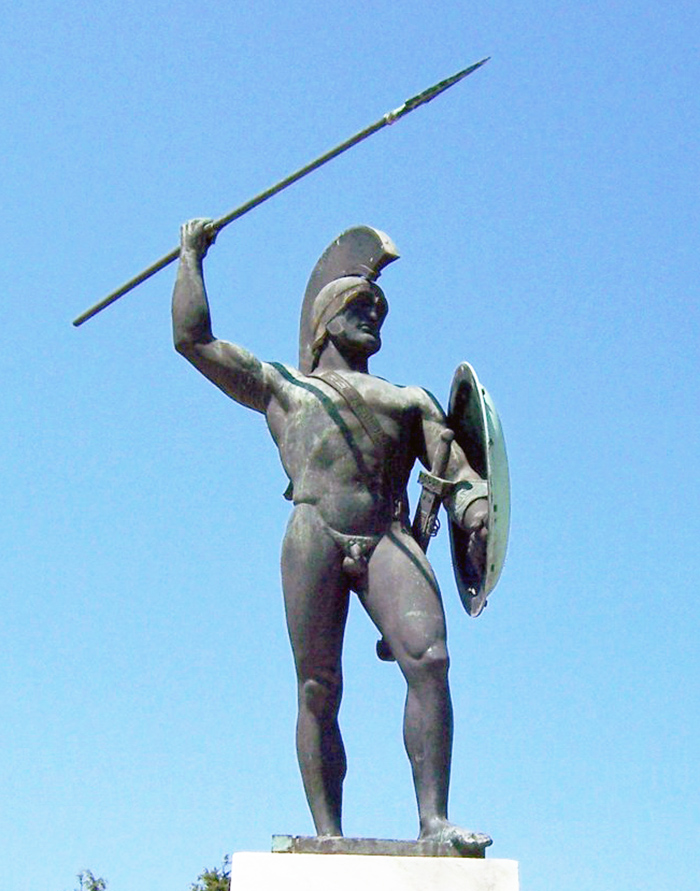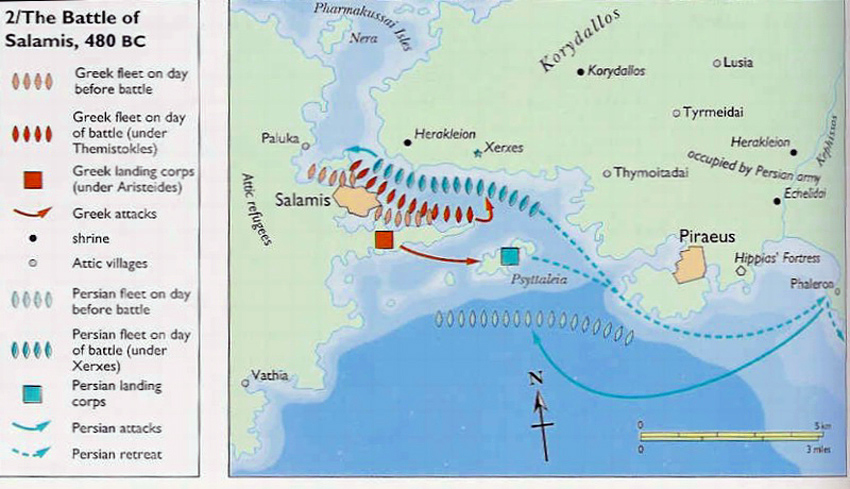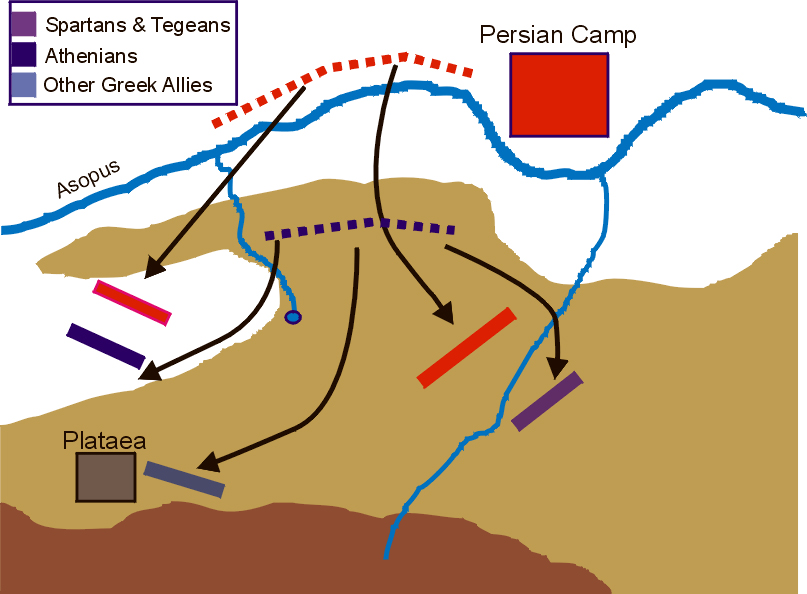Darius died in 486 BC and was succeeded by his son Xerxes, who had suppressed the rebellion in Egypt and moved to Greece. The storm collapsed two bridges that were built over the Hellespont (Dardanelles). Then Xerxes ordered that the sea was whiped and engineers beheaded. There had been built new pontoon bridges through which the Persians in 480 BC spring moved on to the Balkans. Persian navy was moving parallel to the army.
After a Marathon battle in Athens, for a few years a political struggles between Miltiades, Xanthippus, Aristides and Themistocles were led. Athenians know that the Persians were preparing for a new march and had to prepare defense, but did not know how. The main word in considering the type of defense had Themistocles and Aristides. Themistocles was a strategist at Marathon, and advocated for the creation of the Navy, while the leader of the landowners Aristides was for equipment of heavy infantry. The winner was Themistocles who had been supported by Attic sailors, merchants and businessmen who were for more advanced general progress in the navy. Aristides was by ostracism sent into exile.
In addition to the Athenians, the other Greeks were preparing to attack the Persians. 481 BC representatives of 31 of the city had met at the Isthmus of Corinth and they decided to join together and to defend Greece. All Boeotian cities except Plataea and all Thessals were with the Persians. Many Greek cities remained neutral. Spartans and Athenians took over leadership of the united Greeks.



Battle of Thermopylae
In June 480 BC Persian army and navy started from the Thessaloniki Gulf through Thessaly to the south. The army had to go through the gorge of Thermopylae, where the Persians met squad of Peloponnesians, led by Spartan King Leonidas. Greeks have long resisted superior Persians and held them as long as they were not surrounded by the Persians from the back. Greeks had withdrawn while the Spartans stayed and died heroically (Thermopylae epitaph: Oh stranger, tell the Lacedaemonians that we lie here, trusting their words). The heroes of Thermopylae were sacrificed for the other, because they allowed for Athenians to evacuate and divisioned the military.



Battle of Artemisia
The Greek navy led by Eurybiades opposed the Persian at northern point of Euboea Artemis. There battle was led with changing fortune. The Greeks managed to keep the Persians, but after the Leonidas told he had lost, the Greeks have retreated to the south.
Battle of Salamis
Xerxes entered the Greece through the Thermopylae. The population of Athens had already soughted refuge in Athens, Aegina and Troezen thanks to the navy, that withdrew from the Battle of Artemisia. In September 480 BC. Persians entered the Athens and devastated and burned it. Persian navy sailed into Phalerum.



In late September, there was a great battle on the sea at the island of Salamis. There the Greeks triremes skillfully manerved around the huge Persian ships, that could not be set up to fight in the channel between Salamis and the coast. For this victory the most credit had Themistocles, who led the battle and advocated building a navy. Persians at Salamis lost many ships that were support for their ground forces, especially because of the supply. Xerxes, who was watching the battle of Salamis from the shore, was forced to withdraw his army into Asia. He left in Thessaly a few thousand troops led by Mardonius.



Battle of Plataea
Mardonius very cleverly tried over the Macedonian King Alexander I to make a deal with the Athenians, but did not succeed. In the spring of 479. BC. from Thessaly Mardonius joined Beotia where his allies Thebans accepted him, and from there he entered the Attica. The Athenians were again moved and the Persians re-entered to the Athens. Athenians, Plataean and many Peloponnesians had joined together and attacked the Persians at Plataea in Boeotia in August in 479 BC. The Greeks under the command of Spartan Pausanias defeated the Persians, and Mardonius was killed in battle.
Battle of Mycale
This battle took place in August in 479 BC. (On some versions at the same day as the battle of Plataea). Greek navy at Asia Minor at the point Mycale had beatan the Persians. After that, the Greek navy withdrew on Samos. Spartans retreated while the Athenians continued the war against Persia. In the spring of 478 BC. they took the Sestos on the Hellespont. The team finished the Greco-Persian wars on European soil. The Greeks under the Athenians moved to counterattack and the Asia Minor Greeks started to release from the Persian rule.
Save
